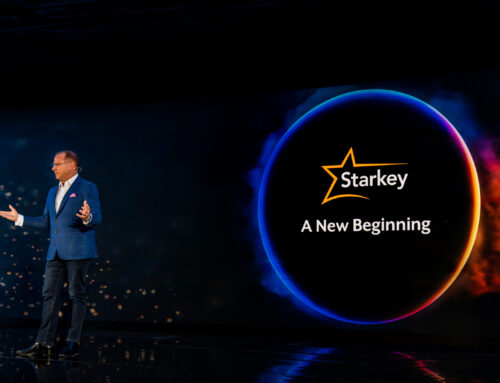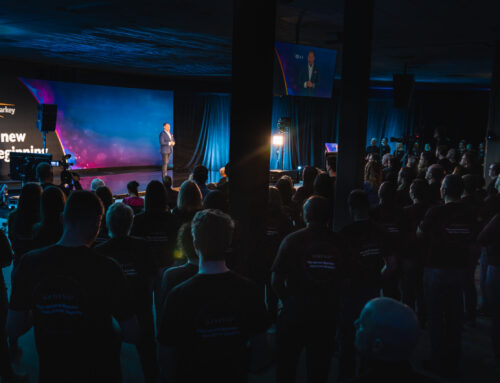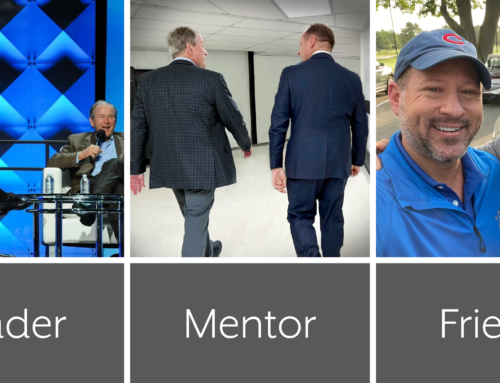At 83%, the hearing aid satisfaction rate is the highest it has ever been.
As the president and CEO of a hearing aid manufacturer, I’m not touting that fact to brag. While reaching an important milestone like this is something to note for our industry, we still have work left to do.
In the Drawer Hearing Aids
When I started working at Starkey nearly 30 years ago, I remember having to learn this industry’s jargon – which includes a lot of abbreviations: CE, CC, CIC, BTE. One that caught me by surprise was ITD (In The Drawer) hearing aids. For our industry, ITDs used to be a major problem. The big, clunky hearing aids of the past that were uncomfortable to wear, difficult to use and that didn’t deliver a hearing solution tailored to the individual user’s needs, were oftentimes worn for a little while before being thrown in a drawer. Many of these direct-to-consumer devices were bought from a catalog or late-night TV.
Now, hearing technology is customized to the user. Everyone experiences hearing loss differently. From the shape of the ear canal to how the brain processes sound, no two ears are alike. Hearing loss can even vary from ear to ear in the same person. Customizable hearing technology that delivers the best sound quality is necessary for the most optimized patient outcomes. The use of custom devices is also seeing an increase. Starkey has always been the leader in custom solutions, and more people are seeing (and feeling) the benefits of wearing a device that is fit exactly to their ear. When you are wearing a device for 16 hours each day, comfort cannot be overlooked.
More Than Marketing
In the hearing industry, a high satisfaction rate is much more important than a marketing play. When people are satisfied with their hearing aids, it means they are wearing their devices and getting the benefits of them.
Keeping hearing aids in the ears of people who need them has never been more important. When more and more research is finding a link between hearing loss and things like loneliness, depression, cognitive decline and even dementia, a hearing aid must do its job of connecting the user to the world around them.
Because of this, 83%, while high, is not good enough. Everyone who buys a hearing aid should see the benefit of that device. Ensuring satisfaction with these devices is now going to be even more difficult as the definition of a hearing aid expands. Over-the-counter, or OTC, hearing aids present an incredible opportunity to open access even more to hearing health resources for Americans with perceived mild-to-moderate hearing loss. While it currently takes people with hearing loss seven to ten years to address it, I hope this new category offers an entry into the world of hearing aids, increasing adoption and decreasing the amount of time someone waits to get the help they need.
However, I’ve been very vocal the past several years that accessibility cannot come at the cost of quality and patient satisfaction. While a good experience with an OTC device could help someone sooner, a bad experience could mean more devices end up in drawers, and those with hearing loss quickly dismiss hearing aids altogether. For an industry that has done so much work to reduce the stigma around addressing hearing loss – making hearing aids with cutting-edge technology and educating the public and the media that hearing health is essential – manufacturers that don’t hold an OTC device to the same standard as a medical device make me worry we’ll see that satisfaction rate go in the wrong direction. As an industry, we can’t take two steps forward only to take three steps back – patients deserve more.
At the beginning of 2020, I said the hearing industry was entering its greatest decade. I still believe that now more than ever. The technology that companies like Starkey are developing is jaw dropping. We are just beginning to tap into the capabilities of what artificial intelligence in hearing aids can do and how it can have real, tangible impacts for those with hearing loss. This is really cool technology, and there is a buzz around hearing aids like I’ve never seen in my career. But whether it’s cool tech or OTC, at the end of the day, it all comes down to people. Helping people hear better is job #1. We answer to the patient. If we remain committed to the patient and their experience, my hope is that some day very soon, an 83% satisfaction rate won’t be seen as a win but as just the beginning.





